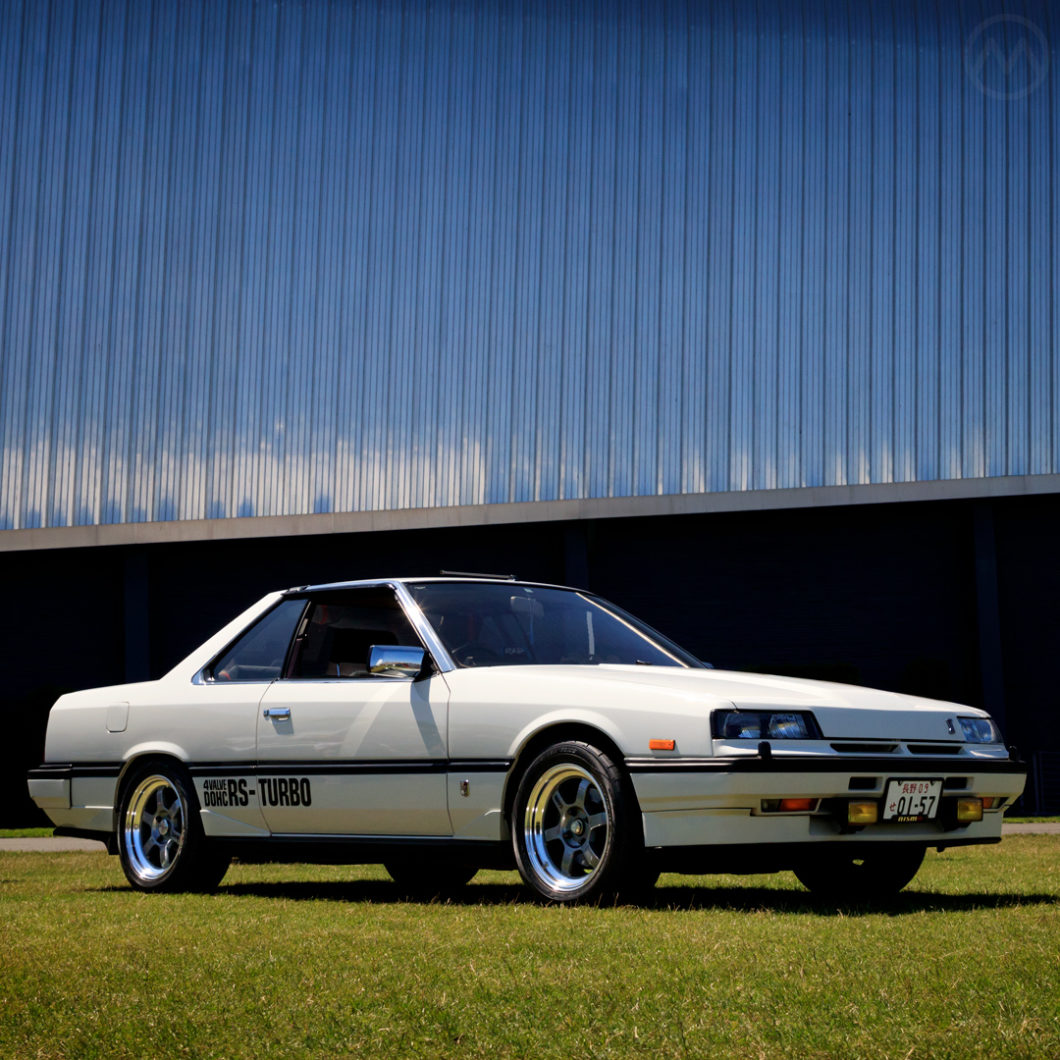Most of the time, when people talk about classic Nissan Skylines, it’s the R32/33 GT-Rs that dominate the conversation; or possibly the 1968-72 C10 “Hakosuka” or 1972/73 “Kenmeri” GT-Rs. But Nissan built millions of Skylines over the years, and many of them don’t get much attention outside of the hard-core JDM car folks.
The R30 Skyline
The R30 Skyline went on sale in the late summer of 1981, but the most special iteration was the DR30 RS – launched that October. Skylines, always a group of family cars first and a performance car second, were a little more sedate during the emissions-and-oil crises era, but the new RS was aimed at performance buyers specifically.
Most of the classic performance skylines are six-cylinder cars, but the DR30 Skyline RS/RS-X were fours.
The original 1981 RS was powered by an engine informed by the OPEC experience – Nissan’s four-cylinder FJ20E – the first four-valve-per-cylinder production engine in Japan. 4V layouts weren’t new became common over the course of the 1980s, but Nissan was on the vanguard in 1981.
The 150-hp 1,990-cc FJ20E, in naturally aspirated form, delivered slightly more power than the Skyline 2000 GT Turbo’s ~140-hp L20ET Six. The RS was also lightened and stripped of some creature comforts (a faintly more luxurious RS-X followed).
Enter: FJ20ET
In February, 1983, the FJ20ET was born – now with over 190hp – making the Skyline RS/RS-X turbos seriously hot machines for the time. A 2.4 liter version of this engine, the FJ24, was used in Nissan’s Group B rally car, the 240RS; and the S12 Silvia/Gazelle also got a version of the FJ20ET.
Because of the car’s increased performance and profile, Nissan decided a few months later to give the DR30 a visual update that would match the increased punch and further differentiate the car from the other Skylines which, again, included diesel six hatchbacks for families. More than 400,000 R30s were made of all types, but the RS Turbo was a halo car.
The visual update consisted of revised front styling that moved the air intake down low – the clean looking front got the name Tekkamen (“Iron Mask”). There were also side skirts and graphics.
As with the rest of the R30s, the styling was executed under the leadership of Shinichiro Sakurai, who had been on Skyline teams since the Prince days (the Skyline started off as the Prince Skyline, before Prince merged with Nissan in 1966).
For 1984, an intercooler was added, which in the RS Turbo C pushed the car to 205 hp. Sedans and coupes were available, but as usual it’s the coupes that get the attention. RS-Xs had higher equipment levels than RS or RS Turbo Cs.
R30 to R31, the Birth of the RB20
In 1986, the R30 (which shared much with the C31 laurel) was replaced by the R31. Being an evolution of the R30, it did not look so different – to the uninitiated, from behind, the Tekkamen coupes are sometimes confused for R31s.
The FJ20ET did not continue in the R31. Lightweight and powerful, it’s high manufacturing costs dictated a different direction and the hot R31s were powered by the new RB-family of sixes – in the R31 that meant the RB20, but in time this engine would become a familiar Nissan powerhouse.
The DR30 was homologated into FIA Group A racing and did quite well in the mid-eighties, though it competed primarily in Asia and in Australia/NZ. Skylines were not offered in North America or Europe in this generation, so this car is a JDM import.

